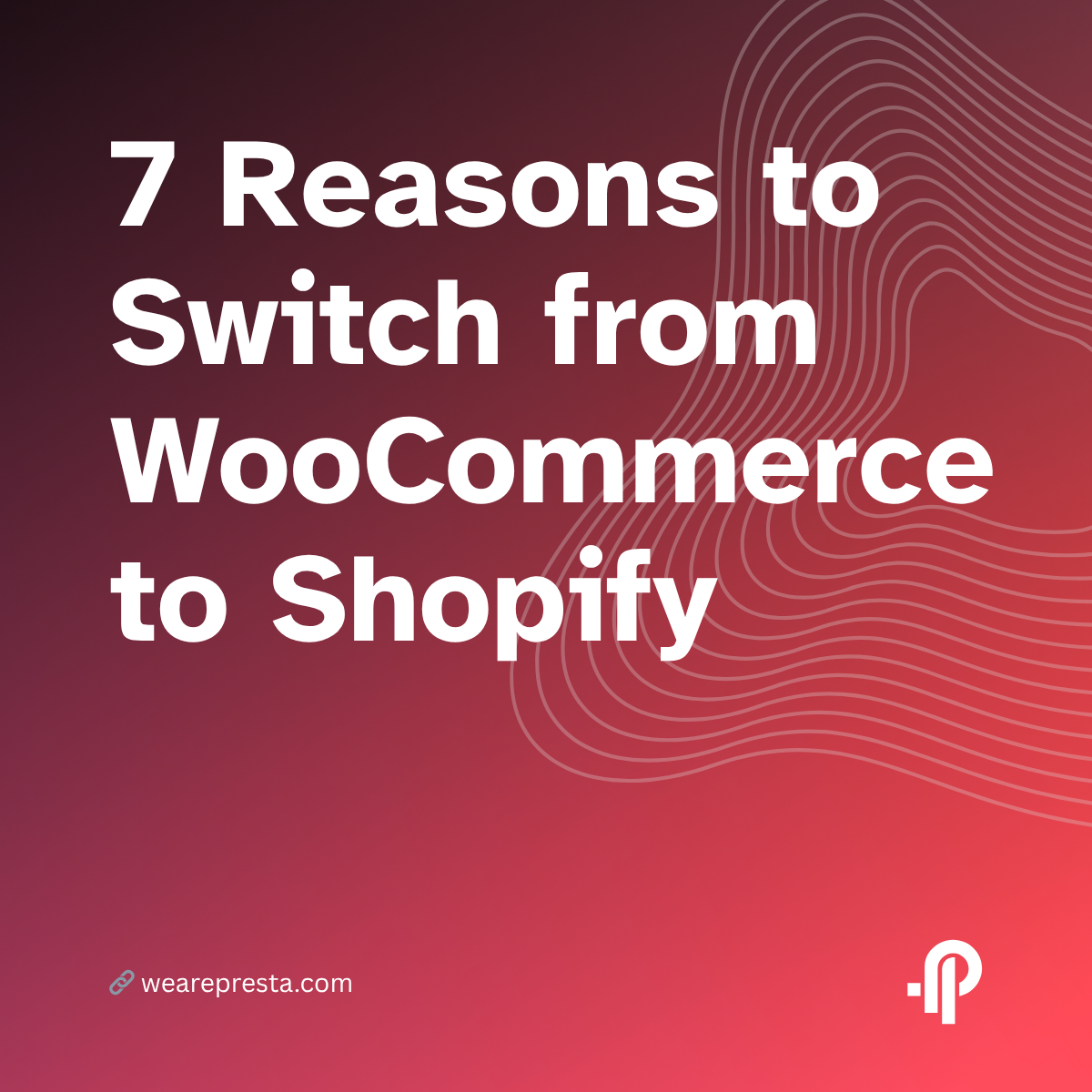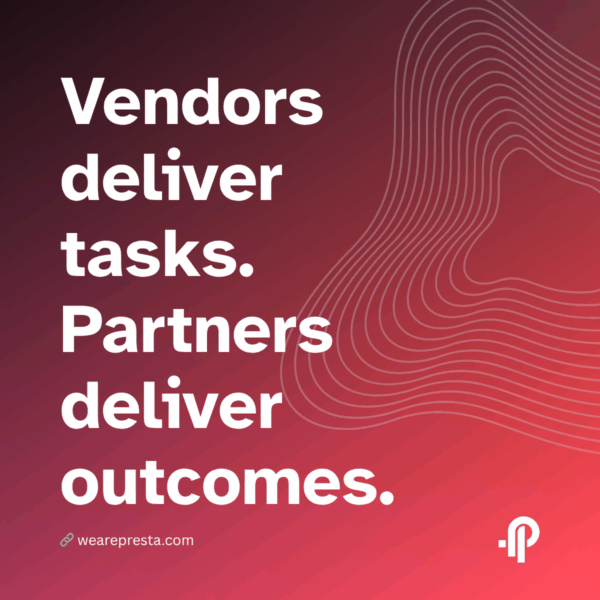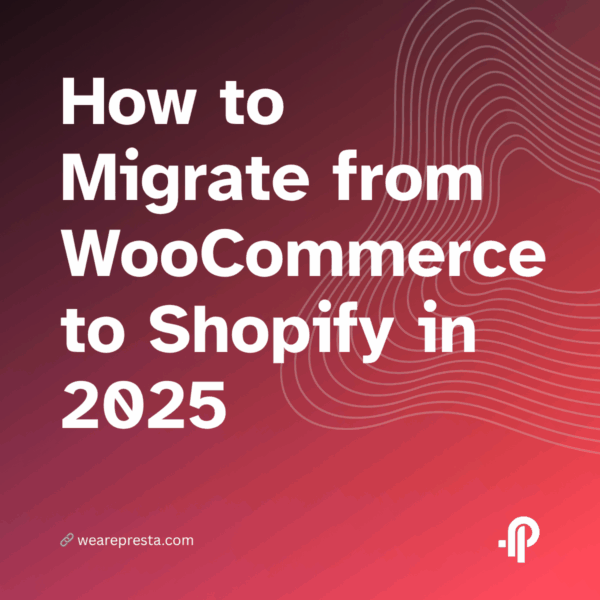7 Reasons to Switch from WooCommerce to Shopify
Switching to Shopify offers predictable pricing starting at $39/month and robust scalability, processing up to 10,000 checkouts per minute. Shopify’s enterprise adoption is strong, handling billions in annual gross merchandise value with features like Markets Pro and B2B catalogs. Unlike WooCommerce’s variable costs, Shopify provides clear tiers, ensuring better budgeting for high-traffic stores. Elevate your e-commerce experience with Shopify’s comprehensive tools and support.

Introduction: Evaluating E-Commerce Platform Migration
Switching e-commerce platforms can feel daunting, but it often opens up new possibilities for growth and innovation. If you’re currently using WooCommerce and considering a move to Shopify, evaluating the benefits is crucial.
Shopify’s robust infrastructure supports billions in annual sales and is designed to scale with your business, ensuring you won’t outgrow your platform as you expand. The predictable pricing structure starts at $39 per month, making budgeting easier compared to WooCommerce’s variable costs tied to hosting and plugins (Omnisend).
In this guide, we’ll explore seven compelling reasons to make the switch, highlighting how Shopify can elevate your brand and streamline your operations. By understanding the advantages, you can make an informed decision that aligns with your business goals.
1. Streamlined Development Process and Reduced Technical Overhead
Migrating to Shopify means embracing a streamlined development process that can significantly reduce technical overhead. With its user-friendly interface and built-in features, Shopify allows businesses to launch and manage their online stores without the complexity often associated with WooCommerce. This means less time spent on setup and troubleshooting, allowing you to focus on what truly matters—growing your brand.
Additionally, Shopify’s robust architecture is designed to handle scalability effortlessly. As your business expands, you won’t need to worry about the potential pitfalls of hosting or plugin conflicts that often arise with WooCommerce. Shopify’s seamless integration of various e-commerce tools not only simplifies your operations but also enhances your ability to adapt to market changes and customer needs. This efficiency can be a game-changer for your business’s long-term success (Website Builder Expert).
Managed Infrastructure vs. Self-Hosted Complexity
When considering managed infrastructure versus self-hosted options, Shopify clearly stands out. Shopify provides a fully managed hosting environment, meaning you won’t have to deal with server setups, maintenance, or security issues. This significantly reduces the complexities that often come with self-hosting, allowing you to focus on your business rather than technical details.
On the other hand, WooCommerce requires you to manage your hosting, which can lead to unexpected costs and complicated troubleshooting. With multiple plugins and themes, you may encounter compatibility issues that can disrupt your store’s operations. By choosing Shopify, you gain peace of mind with built-in security features, 24/7 support, and a reliable infrastructure designed to support your growth. This makes Shopify a more convenient and efficient choice for businesses looking to thrive in the digital marketplace.
Impact on Web Development Resources and Iteration Cycles
Migrating to Shopify can significantly impact your web development resources and iteration cycles. With Shopify’s all-in-one platform, you’ll find that development time decreases as you no longer have to juggle multiple plugins or deal with server issues. This means your team can focus on enhancing user experiences and launching new features rather than troubleshooting technical problems.
Moreover, the streamlined processes that Shopify offers allow for faster iteration cycles. You can quickly test and launch new ideas, adapt to market trends, and respond to customer feedback without the lag that often comes with WooCommerce. This agility not only improves your product but also keeps your brand relevant and competitive in a fast-changing e-commerce landscape.
In short, switching to Shopify means reallocating resources more efficiently, freeing up your team to concentrate on what truly matters—driving growth and delivering exceptional digital experiences.
2. Superior Performance Architecture for Enhanced Digital Experiences
Migrating to Shopify brings a superior performance architecture that enhances your digital experiences. Shopify is engineered for speed and reliability, ensuring that your online store can handle high traffic volumes without compromising performance. This stability translates into faster load times, which are crucial for maintaining customer engagement and boosting conversion rates.
Moreover, Shopify’s infrastructure supports billions in annual gross merchandise value, showcasing its capability to accommodate businesses of all sizes. By switching platforms, you gain access to advanced features like built-in security and seamless payment integrations, which significantly enhance the shopping experience for your customers. This robust architecture not only simplifies your operations but also empowers you to create memorable interactions that keep customers coming back (Pagely).
Load Time Optimization and UX Implications
Migrating to Shopify not only enhances the overall performance of your online store but also significantly improves load times, which are critical for user experience. Slow-loading pages can lead to increased bounce rates and lost sales, as customers expect instant access to content and products. Shopify’s optimized infrastructure ensures that your site runs smoothly, even during peak traffic periods.
Moreover, faster load times contribute to better SEO rankings, making your store more discoverable to potential customers. With Shopify, you benefit from a platform designed with speed in mind, allowing you to create engaging digital experiences that keep users coming back. This shift from WooCommerce can lead to a more satisfied customer base and ultimately drive higher conversion rates.
3. Comprehensive Security Framework Without Additional Configuration
Migrating to Shopify provides a comprehensive security framework that requires no additional configuration on your part. Shopify takes care of essential security measures, including SSL certification and PCI compliance, ensuring your customers’ data is protected. This built-in security not only safeguards transactions but also boosts your customers’ trust in your brand.
In contrast, WooCommerce necessitates ongoing management of security protocols, leaving room for potential vulnerabilities. You may find yourself dealing with server-related security issues, which can be both time-consuming and stressful. By switching to Shopify, you can focus on growing your business while enjoying peace of mind, knowing that security is one less thing to worry about (Zapier).
Built-in PCI Compliance and SSL Certification
Migrating to Shopify offers you built-in PCI compliance and SSL certification, simplifying your security concerns significantly. Shopify automatically handles these crucial aspects, ensuring your customers’ data is protected without requiring any additional configuration on your part. This not only safeguards transactions but also builds trust with your audience, allowing you to focus on growing your brand.
In contrast, WooCommerce demands ongoing management of security protocols, which can leave room for vulnerabilities. You might find yourself bogged down with server-related issues and the complexities of maintaining compliance, which can be both time-consuming and stressful. By choosing Shopify, you eliminate these headaches, giving you peace of mind and the freedom to concentrate on what matters most—your business growth.
With Shopify’s comprehensive security framework, you can rest easy knowing that your store’s integrity is in expert hands, allowing you to create a seamless shopping experience for your customers.
4. Predictable Cost Structure for Enterprise-Grade E-Commerce
Switching to Shopify offers a predictable cost structure that is crucial for businesses wanting to manage their budgets effectively. With plans starting at $39 per month, Shopify eliminates the uncertainties of variable costs associated with WooCommerce, where expenses can fluctuate based on hosting, plugins, and additional features needed to enhance functionality. This clear pricing model allows you to plan for growth without unexpected financial strain.
Furthermore, Shopify’s enterprise-grade features cater to larger businesses as well, providing advanced tools that can scale with your needs. This includes multi-channel selling and native payment gateways, which simplify operations while keeping costs in check. With a reliable cost structure, you can focus more on elevating your brand rather than worrying about hidden fees and maintenance costs, enabling a smoother path to success (Shopify Plus).
Transparent Pricing vs. Hidden Development Costs
Switching from WooCommerce to Shopify not only simplifies your budgeting process but also eliminates the frustration of hidden development costs. With Shopify’s clear pricing model, businesses can easily calculate their expenses without worrying about unexpected fees that often arise from hosting, plugins, or maintenance associated with WooCommerce. This transparency helps you allocate resources more effectively and plan for future growth without financial surprises.
In contrast, WooCommerce can lead to variable costs that may escalate as you add features or resolve technical issues. These hidden expenses can quickly add up, diverting funds away from essential areas like marketing or product development. By choosing Shopify, you benefit from predictable pricing that allows you to focus on building your brand rather than juggling unpredictable expenses.
The peace of mind that comes with knowing your costs upfront can greatly enhance your decision-making process, making it easier to invest in strategies that drive your business forward. In the ever-evolving e-commerce landscape, having a solid grasp on your financial commitments is invaluable for sustained success.
5. Professional Support Infrastructure for Mission-Critical Operations
Migrating to Shopify ensures you have a professional support infrastructure tailored for mission-critical operations. Shopify offers 24/7 customer support, so you can resolve issues quickly, minimizing downtime and ensuring your business runs smoothly. This level of support is vital, especially for e-commerce, where every second counts.
In contrast, WooCommerce often leaves you navigating forums and troubleshooting on your own, which can be frustrating. With Shopify, you can focus on your strategy and customer engagement, knowing that expert help is just a click away. This dependable support infrastructure not only enhances your operational efficiency but also provides peace of mind as you scale your business (Shopify Features).
6. Scalable Payment Processing and Multichannel Integration
Migrating to Shopify ensures scalable payment processing and seamless multichannel integration, which are essential for modern e-commerce. Shopify supports a variety of payment gateways, allowing you to choose what works best for your business. This flexibility not only enhances customer experience but also simplifies transactions, making it easier for your brand to grow without technical hiccups.
Additionally, Shopify’s multichannel capabilities let you sell across platforms like Amazon, Facebook, and Instagram, centralizing your operations in one place. This integration helps you reach a broader audience while managing inventory and sales efficiently. With Shopify handling the technical aspects, you can focus on crafting engaging customer experiences and driving sales, ensuring you stay competitive in the ever-evolving digital landscape (r/ecommerce).
Native Payment Gateway Integration
Migrating to Shopify facilitates native payment gateway integration, which streamlines your transaction processes significantly. Unlike WooCommerce, where you may need to install and configure multiple plugins, Shopify offers built-in payment solutions that are easy to set up and manage. This not only reduces technical headaches but also enhances the customer checkout experience, leading to higher conversion rates.
Additionally, Shopify supports a wide range of payment methods, including credit cards, digital wallets, and more. This flexibility allows you to cater to diverse customer preferences, making it easier to close sales and boost revenue. By integrating these payment solutions seamlessly, Shopify empowers your business to scale efficiently while maintaining a focus on customer satisfaction.
Multichannel Selling Capabilities
Migrating to Shopify enhances your multichannel selling capabilities, allowing you to reach customers wherever they are. With Shopify, you can effortlessly integrate your store with platforms like Amazon, Facebook, and Instagram, centralizing your sales and inventory management in one user-friendly interface. This capability not only expands your audience but also streamlines your operations, making it easier to grow your brand without getting bogged down by technical complexities.
By consolidating sales channels, Shopify empowers you to deliver a cohesive customer experience. This means your customers can shop seamlessly across different platforms, leading to increased engagement and higher conversion rates. With Shopify handling the backend intricacies, you can focus on creating compelling marketing strategies and engaging content to attract and retain your customers.
7. Enhanced UI Consistency and Accelerated Time-to-Market
Migrating to Shopify enhances UI consistency and accelerates your time-to-market dramatically. With Shopify’s intuitive theme system, you can create a cohesive brand experience across your store without extensive development. This streamlined approach not only simplifies design but also ensures that your online presence reflects your brand’s identity seamlessly.
Additionally, Shopify’s built-in features allow for quick adjustments and updates, enabling faster deployment of new products or campaigns. Unlike WooCommerce, where varying plugins might lead to inconsistencies, Shopify’s unified platform fosters a more stable environment. This agility can significantly reduce the time it takes to get your products in front of customers, empowering you to respond swiftly to market trends and consumer needs (YouTube Expert).
In essence, choosing Shopify means prioritizing efficiency and consistency, which are crucial for staying competitive in today’s e-commerce landscape.
Theme Compatibility and Design System Integration
Migrating to Shopify ensures seamless theme compatibility and a cohesive design system integration. Shopify’s platform is built with a unified theme architecture that allows you to create visually stunning stores without the headaches of plugin conflicts or extensive custom coding. This means your brand gets to shine through a consistent look and feel across all customer touchpoints.
Additionally, Shopify’s built-in design features let you quickly make adjustments to your store’s layout and aesthetics. This agility is particularly valuable for responding to market trends or seasonal promotions, allowing you to keep your offerings fresh and engaging. With a focus on user experience, Shopify empowers you to deliver an attractive online presence that resonates with your audience and drives sales.
Overall, Shopify simplifies the process of maintaining a polished and professional storefront, giving you more time to focus on your business strategy and customer engagement.
Conclusion: Strategic Platform Selection for Long-Term Growth
Migrating to Shopify not only streamlines your operations but positions your business for long-term growth. With a reliable platform that prioritizes performance, security, and user experience, you can focus on scaling your brand without the technical headaches associated with WooCommerce. This strategic shift allows you to harness the full potential of your e-commerce efforts, maximizing both efficiency and customer satisfaction.
As you evaluate your options, consider how Shopify’s predictable pricing, professional support, and enhanced features align with your growth objectives. By making the switch, you’re not just changing platforms—you’re investing in a future where your brand can thrive in a competitive marketplace, adapting quickly to changes while delivering exceptional experiences for your customers. Embrace this opportunity to elevate your business and set the stage for sustained success (WooCommerce Docs).
Collaborative Migration Planning with Development Partners
Collaborative migration planning with development partners is essential for a smooth transition from WooCommerce to Shopify. Working closely with your team, you can identify key objectives and tailor the migration process to align with your business goals. This collaborative approach ensures that everyone is on the same page, minimizing disruptions and enhancing overall efficiency.
Engaging with experienced partners can also help you leverage best practices and avoid common pitfalls during the migration. By pooling your resources and expertise, you can create a roadmap that addresses your unique challenges while capitalizing on Shopify’s strengths. This partnership fosters a more agile and adaptable migration process, allowing your brand to hit the ground running in its new environment.
Ultimately, a well-planned collaborative migration sets the stage for long-term success, ensuring that your new Shopify store not only meets your immediate needs but also supports future growth.
Frequently Asked Questions
What are the main advantages of using Shopify over WooCommerce?
Shopify offers a user-friendly interface, built-in features, and a predictable pricing structure starting at $39 per month, making it easier to manage your store without the technical complexities often associated with WooCommerce.
How does Shopify handle scalability compared to WooCommerce?
Shopify is designed to support scaling businesses, enabling them to handle billions in annual sales seamlessly. In contrast, WooCommerce may require more plugins and technical adjustments as your store grows.
What are the costs associated with switching from WooCommerce to Shopify?
Switching to Shopify involves a starting cost of $39 per month, whereas WooCommerce costs can vary based on hosting, plugins, and maintenance. This can lead to more predictable budgeting with Shopify.
Is it easy to migrate from WooCommerce to Shopify?
Yes, migrating from WooCommerce to Shopify can be straightforward, especially with various migration tools available. These tools help transfer products, customer data, and order history efficiently.
Can Shopify help improve my online store’s performance?
Absolutely! Shopify’s robust infrastructure ensures faster load times and better uptime, which can significantly enhance user experience and potentially increase sales compared to WooCommerce-hosted stores.

